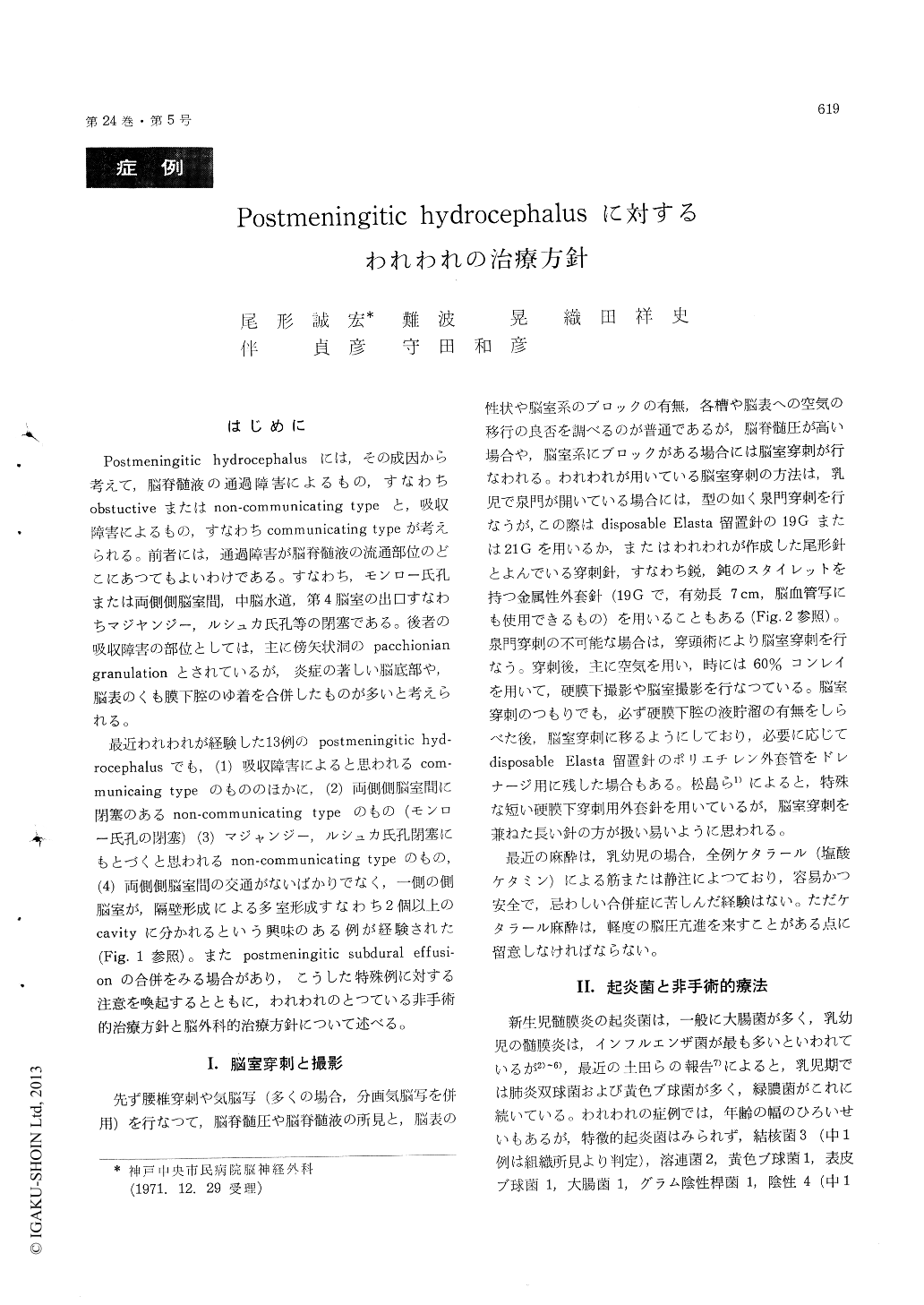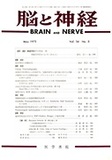Japanese
English
- 有料閲覧
- Abstract 文献概要
- 1ページ目 Look Inside
はじめに
Postmeningitic hydrocephalusには,その成因から考えて,脳脊髄液の通過障害によるもの,すなわちobstuctiveまたはnon-communicating typeと,吸収障害によるもの,すなわちcommunicating typeが考えられる。前者には,通過障害が脳脊髄液の流通部位のどこにあつてもよいわけである。すなわち,モンロー氏孔または両側側脳室間,中脳水道,第4脳室の出口すなわちマジヤンジー,ルシュカ氏孔等の閉塞である。後者の吸収障害の部位としては,主に傍矢状洞のpacchioniangranulationとされているが,炎症の著しい脳底部や,脳表のくも膜下腔のゆ着を合併したものが多いと考えられる。
最近われわれが経験した13例のpostmeningitic chyd—rocephalusでも,(1)吸収障害によると思われるcom—municaing typeのもののほかに,(2)両側側脳室間に閉塞のあるnon-communlcating typeのもの(モンロ—氏孔の閉塞)(3)マジャンジー,ルシュカ氏孔閉塞にもとつくと思われるnon-communicating typeのもの,(4)両側側脳室間の交通がないばかりでなく,一側の側脳室が,隔壁形成による多室形成すなわち2個以上のcavityに分かれるという興味のある例が経験された(Fig.1参照)。またpostmeningitic subdural effusi—onの合併をみる場合があり,こうした特殊例に対する注意を喚起するとともに,われわれのとつている非手術的治療方針と脳外科的治療方針について述べる。
As ordinary hydrocephalus, postmeningitic hy-drocephalus can be divided into two types, that is, the obstructive type and the communicating type. Among the former type of postmeningitic hydro-cephalus we have experienced such interesting cases as follows :
(1) Those cases where there is a block between the lateral ventricle and the third ventricle by postmeningitic obstruction of the foramen of Monro.
(2) The cases where in addition to a block at the foramen of Menro, the lateral ventricles are multiloculatcd because of post-inflammatory septum formation.
Our operative treatment for type (1) included three different methods.
(a) Separate ordinary shunting procedures from each independent ventricle to another visceral cavity or to the atrium,
(b) A single shunting catheter using a Y-con-nector to connect bilateral ventricular catheters.
(c) The production of a communication through the corpus callosum or the septum pellucidum fromone lateral ventricle to the other lateral ventricle. This third procedure is performed with the ence-phaloscope recently designed by us. The insertion of a silicon tube through the trocar of the ence-phaloscope shunts fluid away from the lateral ven-tricle.
In the case of multiloculated ventricles, that is, type (2), the locules are identified through the ence-phaloscope and with the aid of this instrument a single ventricular catheter with several perforations is positioned so that each of the locules is drained. The ventricular catheter is then connected to an ordinary type of drainage.
In our clinic the timing of the operative treat-ment of postmeningitic hydrocephalus is determined by the cell count of the CSF (less than 100/3 cells/mms) and the total CSF protein (less than 200 mg/dl).
At the outset the neurosurgical treatment of this disorder is external drainage and/or the emplace-ment of antibiotics. Either a ventriculo-peritoneal shunt or a ventriculo-atrial shunt is performed.
Since postmeningitic hydrocephalus is often com-plicated by a postmeningitic subdural effusion, we wish to emphasize that at the time of ventricular tap the presence of a subdural collection of fluid should be investigated. We evacuate subdural effusions repeatedly and perform a shunting pro-cedure from the subdural space to other visceral cavities as required.

Copyright © 1972, Igaku-Shoin Ltd. All rights reserved.


